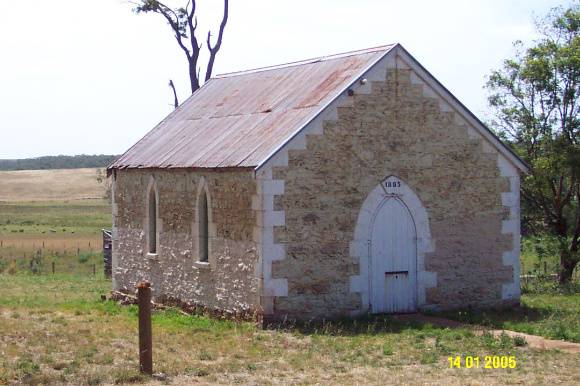| Back to search results » | Back to search page » |
|
METHODIST CHURCH (FORMER)
Location534 WINNAP-NELSON RD, DRIK DRIK, GLENELG SHIRE LevelRecommended for Heritage Overlay |
|
Statement of Significance
What is Significant?
The former Methodist Church, locatedon the Winnap-Nelson Road, Drik Drik was built as a Wesleyan Methodist Chapel in 1885. It is located about 5.0km south-south-west of the intersection of Winnap-Nelson Road and the Princes Highway and 32.5kms north-west of Heywood. The congregation was served by ministers and lay preachers from Portland and later Heywood, the first being the influential Rev. William Lightbody whose descendants continued as members of the congregation. Drik Drik was the first 'preaching station' of the Portland Bush Mission. The present church dates from 1885, and appears to be the second constructed in the area superseding a timber slab church built in 1866 on the same site. The designer is not known but the builder was a Mr. Thomas. It opened free of debt. The church is a simple two bay Gothic structure, built of local stone, the doors and windows having simple Gothic arches, arranged symmetrically. The original fittings such as the altar, pews and memorials have been removed but the church retains a high degree of integrity externally. It is in good condition. The Methodist congregation was always supported in practical ways by the local Presbyterians, with whom there were many close connections. The two formed the Presbyterian-Methodist Co-operation in 1966 and amalgamated as part of the Uniting Church of Australia in 1977, after which the present church passed into private ownership.
How is it significant?
The former Methodist Church, Drik Drik is of historical, social and architectural significance to the Glenelg Shire.
Why is it Significant?
The Methodist Church is of historical significance as an example of the importance of Methodist faith in the Drik Drik area from the 1860s. The church is of social significance to the community of the Drik Drik-Heywood-Portland area as the focus for Methodists who settled there in the mid nineteenth century. It is of architectural significance as a good example of 'primitive' Gothic style used to express religious values.
Group
Religion
Category
Church




